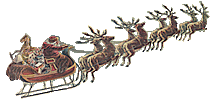FRAUNCE, ABRAHAM (c. 15 581633), English poet, a native of Shropshire, was born between 1558 and 1560. His name was registered as a pupil of Shrewsbury School
in January 157 1/2, and he joined St Johns College, Cambridge, in 1576, becoming a fellow in 1380/81. His Latin comedy of Victoria, dedicated to Sidney, was probably
written at Cambridge, where he remained until he had taken his M.A. degree in 1583. He was called to the bar at Grays Inn in 1588, and then apparently practised as a
barrister in the court of the Welsh marches. After the death of his patron Sir Philip Sidney, Fraunce was protected by Sidneys sister Mary, countess of Pembroke. His last
work was published in 1592, and we have no further knowledge of him until 1633, when he is said to have written an Epitlzalamium in honor of the marriage of Lady
Magdalen Egerton, 7th daughter of the earl of Bridgwater, whose service he may possibly have entered.
His works are: The Lamentations of A mintas for the death f Phyllis (1587), a version in English hexameters of his friends, Ihomas Watsons, Latin Amyntas; The Lawiers
Logike, exemplifying tile praecepts of Logike by the practise of the common Lowe (i58S); Arcadian Rhetorike (1588); Abraham-i Fransi Insigniuin, Armorum . . . explicatio
(1588); The Countess of Pembrokes Yvychurch (1591/2), containing a translation of Tassos Aminta, a reprint of his earlier version of Watson, The Lamentation of Corydon
for the love of Alexis (Virgil, eclogue ii.), a short translation from Heliodorus, and, in the third part (1592) Amintas Dale, a collection of conceited tales supposed to be related
by the nymphs of Ivychurch; The Countess of Pembrokes Emanuell (59); The Third Part of i/ic (OUOICSS of Pembrokes Ivychurch, entituled Amintas Dale (1502). His
Arcadian Rhetorike owes much to earlier critical treatises, but has a special interest from its references to Spenser, and Fraunce quotes from the Faerie Queene a year before
the publication of the first books. In Cohn Clouts come home again, Spenser speaks of Fraunce as Corydon, on account of his translations of Virgils second eclogue. His
poems are written in classical metres, and he was regarded by his contemporaries as the best exponent of Gabriel Harveys theory. Even Thomas Nashe had a good word for
sweete Master France.
The Countess of Pembrokes Einanuell, hexameters on the nativity and passion of Christ, with versions of some psalms, were reprinted b~- Dr .-\. B. Grosart in the third
volume of his Miscellanies of the Fuller IVortI,ies Library (1872). Joseph Hunter in his Chorus Vatum stated that five of Fraunces songs were included in SidneysAsirophel
and St,llo, but it is probable that these should be attributed not to Fraunce, hut to Thomas Campion. See a life prefixed to the transcription of a MS. Latin comedy by
Fraunce, Victoria, by Professor G. C. Moore Smith, published in Bangs Materialien zur Kunde des aiteren englischen Dramas, vol. xiv., i906.


![]() Copyright © 2003, InterMedia Enterprises
Copyright © 2003, InterMedia Enterprises